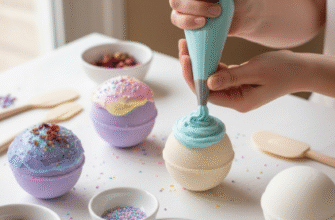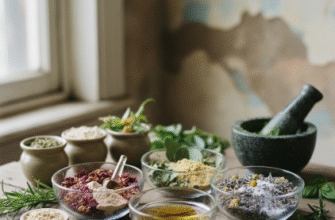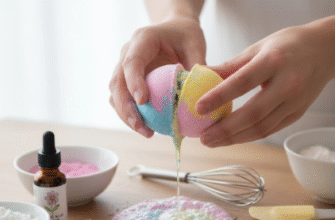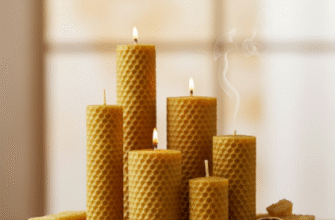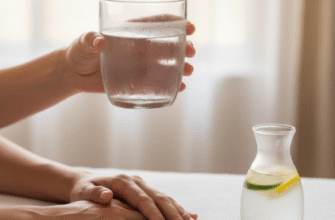Taking a bath is often more than just getting clean; it’s a ritual, a moment of peace in a hectic world. Many people look for ways to elevate this simple act into something more luxurious or mindful. Adding natural elements like salts, oils, or flowers is common, but have you considered incorporating crystals? Bringing the beauty and unique presence of crystals into your bath can transform it into a visually stunning and deeply relaxing experience. However, it’s crucial to approach this practice with awareness and safety in mind.
The idea isn’t necessarily about mystical properties, but rather about enhancing the sensory environment and providing focal points for mindfulness or intention. The sparkle of quartz catching the light through the water, the smooth coolness of a tumbled stone in your hand – these simple things can help ground you in the present moment, turning a routine soak into a mini-retreat. But, and this is a very important but, not all crystals are safe to submerge in water, especially water you’ll be soaking in.
Choosing Your Bath Companions Wisely
The absolute first step is understanding which crystals can safely join you in the tub. Water can damage certain crystals, causing them to dissolve, rust, or even release potentially harmful elements. Stick to hard, non-porous, and non-toxic stones. Think of it like choosing dishwasher-safe dishes – you wouldn’t put delicate china or cast iron through a cycle, and the same logic applies here.
Generally Water-Safe Crystals
These crystals are typically hard and stable, belonging mainly to the quartz family or similar silicate minerals. They don’t dissolve easily and contain no elements that pose a risk through skin contact in bathwater.
- Clear Quartz: Known for its clarity and durability. It’s essentially silicon dioxide, very stable in water.
- Rose Quartz: This popular pink variety of quartz is perfectly safe for a dip. Its gentle appearance complements a relaxing bath.
- Amethyst: A beautiful purple quartz that holds up well in water.
- Smoky Quartz: The brownish-grey quartz variety is also water-safe.
- Citrine (Natural): True, naturally occurring citrine (a yellow quartz) is safe. Be cautious with heat-treated amethyst often sold as citrine, though it’s generally stable too.
- Agate: These banded chalcedony varieties are hard and non-porous.
- Jasper: Most varieties of this opaque chalcedony (like Red Jasper or Ocean Jasper) are robust enough for water.
- Aventurine: This quartz, often green, is generally safe for brief water exposure.
- Carnelian: A reddish-orange chalcedony that can typically handle water.
Always opt for tumbled stones rather than raw clusters if placing them directly in the bath. Tumbled stones are smooth, reducing the risk of scratching yourself or the tub, and less likely to have hidden crevices where water can linger or unwanted mineral deposits hide.
Crystals to AVOID Putting Directly in Bath Water
This is the crucial part. Many beautiful crystals should never be submerged in bathwater. The reasons vary: some dissolve, some rust, some contain metals or minerals that you don’t want leaching into your soak.
- Selenite/Satin Spar: This soft gypsum mineral will dissolve over time in water, becoming pitted and losing its sheen.
- Calcite: Another relatively soft carbonate mineral that can be damaged or slowly dissolve with prolonged water exposure, especially in warm or acidic (from bath products) water.
- Halite (Salt Crystals): It’s literally salt – it will dissolve completely!
- Malachite: Contains copper, which can leach into the water. While beautiful, it’s best admired from afar during bath time.
- Pyrite (“Fool’s Gold”): An iron sulfide, it can rust and potentially leach sulfur when exposed to water and air.
- Hematite: An iron oxide, it can rust.
- Fluorite: While often seen as relatively stable, it’s softer than quartz and can be damaged by hot water or salts. Best to keep it dry.
- Lapis Lazuli: Often contains pyrite inclusions and is porous, making it unsuitable for soaking.
- Turquoise: Often porous and sometimes treated, water can damage its color and integrity.
- Celestite: Contains strontium and is relatively soft and brittle, potentially damaged by water.
- Desert Rose (Barite/Gypsum): Like Selenite, it’s a form of gypsum and will degrade in water.
- Any crystal containing copper, lead, sulfur, asbestos, aluminum, barium, or other potentially toxic elements. If you don’t know the exact composition, err on the side of caution.
Always double-check the specific properties of any crystal before considering putting it in your bathwater. Reputable crystal guides or geological resources are better sources than anecdotal advice. When in doubt, leave it out of the water. Your safety and the integrity of your crystals are paramount. Never use raw or crumbly stones directly in the water.
Preparing and Using Crystals for Your Bath
Once you’ve selected your water-safe companions, a little preparation enhances the experience. First, give your chosen stones a simple physical cleaning. A gentle rinse under lukewarm running water is usually sufficient for hard, tumbled stones like quartz. Avoid soaps or detergents. Some people also like to perform an ‘energetic cleanse,’ which is a personal practice – common methods include smudging with sage (away from the bathroom to avoid smoke alarms!) or placing them in moonlight overnight. This step is entirely optional and depends on your personal beliefs and intentions for the bath.
Next, consider your intention for the bath. Is it purely for relaxation? To wash away the day’s stress? To cultivate a sense of peace? Holding the crystals for a moment before placing them can help focus your mind on this intention. It transforms the act from just tossing rocks in the tub to a more mindful ritual.
Placement Options:
- Directly in the Water: This is only suitable for the verified water-safe, tumbled crystals mentioned earlier. You can simply drop them gently into the tub after it’s filled. Be mindful of where they sit so you don’t accidentally sit on a pointy bit (even tumbled stones can have edges!).
- Around the Tub: This is the safest method for ALL crystals, including the delicate or potentially risky ones. Arrange them on the edge of the bathtub, on a nearby shelf, or on a small stool. They still add to the visual ambiance and serve as focal points without any risk associated with water contact. You can create beautiful grids or arrangements this way.
- Indirect Method: If you want the *idea* of a crystal being ‘in’ the water without direct contact, place your chosen crystal(s) inside a sealed glass jar or a sturdy, waterproof pouch, and then place the jar or pouch into the bathwater. The crystal’s presence is felt, but it remains protected and doesn’t interact directly with the water. This is a great compromise for crystals you’re unsure about or those known to be unsafe for direct immersion.
Enhancing the Crystal Bath Experience
Crystals can be the star, but they also play well with others. Think about creating a complete sensory sanctuary.
- Bath Salts: Epsom salts (magnesium sulfate) or Himalayan pink salt can complement the experience, helping to relax muscles. Just be aware that very salty water might be harsher on some borderline-safe crystals over time, reinforcing the ‘around the tub’ method as safest.
- Essential Oils: A few drops of a relaxing essential oil like lavender, chamomile, or frankincense can add an aromatherapy dimension. Always dilute essential oils properly with a carrier oil or in the bath salts before adding them to water to avoid skin irritation.
- Candlelight: Soft, flickering candlelight creates a calming atmosphere that beautifully illuminates the water and any crystals you’ve placed around the tub.
- Music or Silence: Choose calming instrumental music, nature sounds, or simply embrace the quiet peace.
- Temperature: Ensure the water is a comfortable temperature – not too hot, not too cold. Extreme temperatures aren’t ideal for you or potentially for some crystals.
Combining these elements turns your crystal bath from a simple soak into a deliberate act of self-care and relaxation. It becomes a ritual tailored to your needs and preferences.
After Your Soak
Once your relaxing bath is over, give your crystals a little attention too.
- If they were placed directly in the water, rinse them thoroughly under clean, cool water to remove any soap residue or bath salt minerals.
- Gently pat them dry with a soft cloth. Avoid leaving them to air dry if they were in salty water, as salt residue can build up.
- Store your bath crystals separately from those you keep dry, perhaps in a dedicated pouch or dish.
- For crystals placed around the tub, simply put them back in their usual spots.
Taking a crystal bath is ultimately about creating a personal experience that feels good for you. It’s about appreciating the beauty of natural minerals, setting aside time for relaxation, and perhaps focusing your intentions. By choosing your crystals carefully, prioritizing safety, and setting the right atmosphere, you can easily elevate your bath time into a beautiful and grounding ritual. Remember the golden rule: when in doubt about a crystal’s water safety, keep it out of the tub and enjoy its beauty from the sidelines.
Verified water-safe crystals generally include hard, non-porous silicate minerals like Clear Quartz, Rose Quartz, Amethyst, Agate, and most Jaspers. These are stable and don’t contain harmful elements that could leach into bathwater. Always choose smooth, tumbled stones for direct immersion to avoid scratches. Rinsing them before and after use is recommended.

